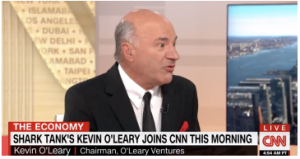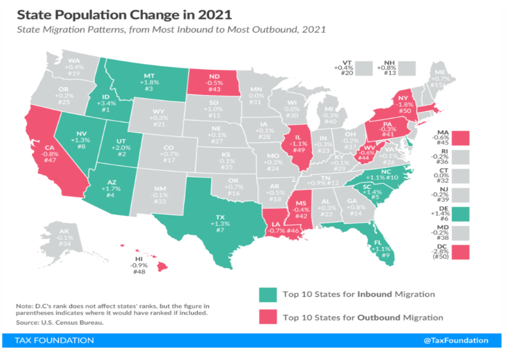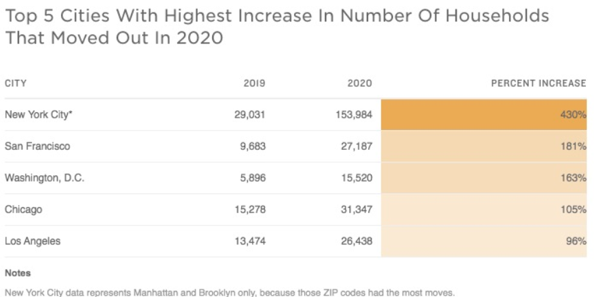 Shark Tank’s Kevin O’Leary joined CNN recently to discuss “the one thing that no one saw coming – the competition between states.” He described a number of states as “un-investible,” and under questioning, opined that regulation in addition to taxes contribute to making states un-investable.
Shark Tank’s Kevin O’Leary joined CNN recently to discuss “the one thing that no one saw coming – the competition between states.” He described a number of states as “un-investible,” and under questioning, opined that regulation in addition to taxes contribute to making states un-investable.
“When you have punitive policy, you are making a mistake … our family grew up in Boston, Massachusetts. We left there to move to Florida like everybody else is … it’s a tough message, people are critical about this, but someone has to call it out, because this is a competition of states now.”
The Pew Center found that 43 states recorded their lowest general fertility rate in at least three decades in 2020, accelerating a pre-existing baby bust. Many states face the prospect of population decline.
Meanwhile, clear leaders and laggards can be seen among states in terms of gains and losses through migration between states:
 The “baby bust,” which began in 2008, does offer short-term relief for state budgets, but only by creating a long-term problem: Whereas population increase is a problem you want to have as a state, population loss can spiral into social and economic decline.
The “baby bust,” which began in 2008, does offer short-term relief for state budgets, but only by creating a long-term problem: Whereas population increase is a problem you want to have as a state, population loss can spiral into social and economic decline.
States that want to have a young citizenry to whom to pass the social and economic torch to in a couple of decades need children now. We should expect states openly competing for young families in the years ahead.
Which states are likely to prosper in this competition? Opinion polls reveal a wide gulf between what parents want (K-12 options and flexibility) and what the median state delivers (ZIP code assignment). States willing to give families control over the K-12 education of their children will hold an advantage.
New York, for instance, taxes the daylights out of citizens to spend more and more per pupil on an education that over time fewer and fewer people want. That’s a great deal for the New York education unions, but a horrid prospect for anyone else. The question isn’t why so many New Yorkers move to Florida, but rather why so few make the move.
In 2017, the federal government sharply reduced a substantial tax subsidy to residents of high tax states. Residence decisions are sticky, but like a snowball heading down an incline, they can grow as they gather momentum. Not surprisingly, a large number of states have been cutting their state taxes in order to increase what O’Leary might describe as their “investability.”
 State lawmakers have also begun to act to reduce restrictions on building new housing, which is another important issue for young families. States that remain in the sway of Jurassic special interest groups, NIMBYism and other “punitive policies,” should understand that other states will be rolling out the red carpet for young families.
State lawmakers have also begun to act to reduce restrictions on building new housing, which is another important issue for young families. States that remain in the sway of Jurassic special interest groups, NIMBYism and other “punitive policies,” should understand that other states will be rolling out the red carpet for young families.
Different states will offer wildly different return on investment to young families. The competition is for the future, and that competition is just getting underway.
May the best state(s) win.


